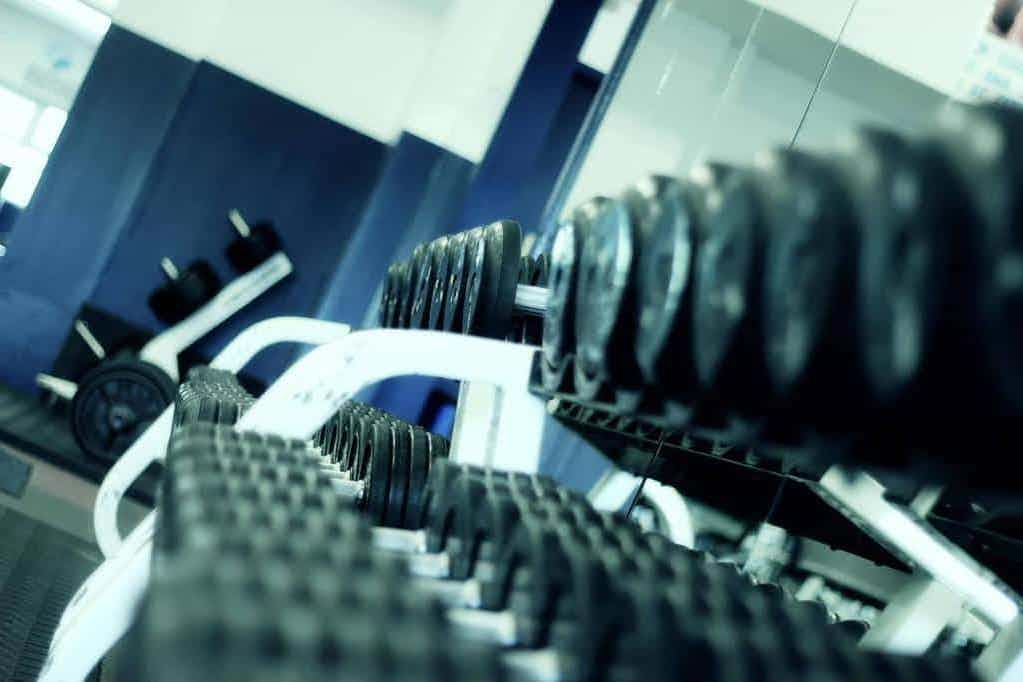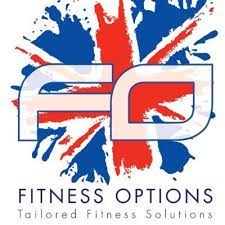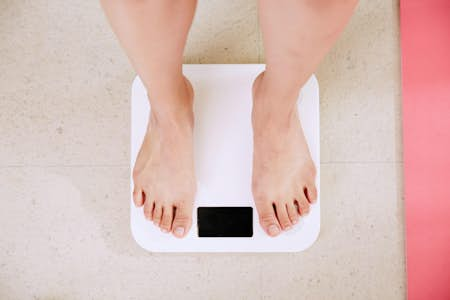Congratulations! You’ve decided that enough is enough and it’s time to get your booty to the gym for the first time at the ripe old age of 50! You’re tired of not seeing the pounds fall off when you change your diet, and you know that if you try harder, you can still look good naked. You’ve finally realised that it’s going to take blood, sweat and tears to get the body you desire.
Going to the gym for the first time can be a daunting experience, let alone going for the first time at 50, so here we explain what you need to do first and give you a beginner's workout plan that’s tailor-made for someone over age 50.
Ready to transform your life? Whether you're looking for a new pair of running shoes or some shiny home gym equipment, you can find everything you need to fuel your fitness journey with our partner brands.
See your doctor first
When you join a gym, you will be asked to fill out a Physical Activity Readiness Questionnaire (PAR Q form). If you answer ‘yes’ to any of the questions on the form, you might be asked to provide medical clearance from your doctor before you can join. Some gyms may not let you start training without a letter from your doctor stating you can exercise there.
The Gym Group, one of the UK’s biggest budget gym chains, which before the Covid-19 pandemic was open 24-hours-a-day, will let you join online without needing to visit in person. You will also be prompted to fill out the PAR Q form online, which can save you from time wasted by going there in person, only to be told you can’t start using the gym until you provide medical clearance.
If it’s been a long time since you did any form of exercise, or you have certain medical conditions, such as high blood pressure, then you should visit your GP first before signing up to the gym. It’s also a good idea to ask your GP to provide you with a medical clearance letter before heading down to your local gym and avoid any delays to starting your training program.
We spoke to James Luscombe, Education Director of Personal Trainer Course provider Study Active, who told Health Times: “Going to a gym can often be a daunting experience especially given the perception that social media often portrays with all gym users being 'super fit.' This perception however is simply not the case.
"Whilst there may well be gym members who are very well trained and fit, there will also be plenty of members who are there, not to flex muscle, but to lose weight, enhance their health, improve confidence and meet new people. For this reason, there is no reason why a mature adult who is new to exercise shouldn’t feel confident about joining their local gym as they will most likely meet many like-minded people once they join.
"It is of course always important for a mature adult to get GP clearance before starting an exercise programme especially if they have any existing health conditions. For some, a GP may even recommend a GP Referral scheme which is where individuals with a medical condition are referred to a scheme within a gym where they will receive tailored exercises for their condition as well as the opportunity to mix with like minded others.
"Overall, exercise can be a very important part of a healthy lifestyle for a mature adult and belonging to a gym can play a key part in this.”
Start slowly and follow this basic routine
One of the biggest and most common mistakes new gym-goers make when first starting at the gym is doing too much too soon. It’s great to have motivation and goals in mind, but doing too much strenuous exercise too soon will only lead to injuries; taking months, or even years to recover from.
It’s important to realise that going from a couch potato, which you might have been for decades, to a 5-day-a-week gym rat overnight is not something I would recommend. Instead, follow this basic 3-day-per-week routine and build up to more exercise sessions and greater levels of intensity as you get fitter.
Your 3-days-a-week training program
You will be doing a combination of cardio and resistance training in each workout. For the cardio exercise, it’s better to use a different machine each time you workout and choose just 3 or 4 of the strength training exercises below. Additionally, rest for at least a day between sessions. The last thing you want is an injury that means you can’t exercise after you’ve just paid for your gym membership.
Warm-up: either 5-7 minutes of brisk walking or slow jogging on the treadmill or if running is painful for you, do 5-7 minutes on the exercise bike or rowing machine. Whichever machine you choose, work up to a tolerable level of breathlessness and elevation in your heart rate. The idea is not to burn yourself out, but to warm your body and joints up.
Warm-up stretches: calves, hamstrings, quads, and shoulders
Interval training on the bike, treadmill or rowing machine: after stretching, re-warm your body for a couple of minutes and get your heart rate back up. You will now do an additional 16 minutes on your chosen machine in the style of interval training, where you work at a higher level of intensity and one you can sustain for 2 minutes, immediately followed by a lower intensity level for another 2 minutes. If you’re very unfit, this may mean alternating between brisk and slow walking. Repeat for a total of 4 intervals.
If you find getting to the higher levels of intensity difficult, you could either try working for less time at the high point, reduce the difficulty on the bike or rower, or just work at a slower pace for 15-20 minutes. The goal here isn’t to overdo it, but get you out of your comfort zone while not deterring yourself from workouts which are too difficult.
Cool down: After your 4 intervals, drop down to a lower level of intensity for 3 minutes so that your breathing and heart rate slow down.
Strength training
An effective exercise session is one which includes cardio and resistance training. Here are some basic resistance exercises you can do to make yourself stronger and improve muscle tone.
Free Weights work your muscles better than the machines in the gym because they require your muscles to activate the smaller stabilising muscles, which is better for improving your strength. If you find them difficult or you don’t feel comfortable, use the machine suggested as an alternative. Ask a fitness instructor to show you how to use it if you’re unsure.
For each strength exercise, you should choose a weight that you can do for around 20 repetitions (reps) before you can’t squeeze another rep out (working to failure). If you feel working to failure is too difficult, work to a moderate level of discomfort instead. For each exercise, you will be doing 2 sets of 20 reps.
Overhead presses: this exercise works your shoulders and triceps. Grab a lightweight barbell and press the weight up and over your head; gradually lower it back down and repeat.
Alternative: shoulder press machine
Upper back squeezes: this exercise will help strengthen your upper back and improve your posture. While lying down on your front, stretch your arms out in front of you and then bring them back behind you while squeezing your shoulder blades. Hold for 2-3 seconds and repeat.
Bicep curls: Hold the barbell just below your waist so that your arms are straight, and then curl up the weight to chest level while keeping your spine neutral. Don’t cheat by using your body to get the last few reps in; otherwise, you may injure yourself. Just use your biceps to do the work.
Alternative: bicep curl machine or dumbbells
Lat pull down machine: this machine works your middle back area and helps keep your back strong. While keeping your back straight, pull the handle down to chest level and repeat.
Press ups on your knees: these are great for working your chest area and improving your core strength. While on all-fours cross your feet behind you and lower your upper body to the floor and then push back up. Do 2 sets of 15, or as many as you can to failure.
Bench press: similar to press ups, bench pressing will work your pectoral muscles and upper shoulders. Get someone to spot you. Lying on the bench, grab the weight with your arms shoulder-width apart, lower it down to chest level and then drive the weight back up.
Alternative: chest press machine
End of workout cool down: on the bike or treadmill work at a low intensity for around 5 minutes, so that your heart rate drops.
Cool down stretches: stretch all the muscle groups you have worked on, such as your chest, shoulders, triceps, legs and back.
The above program will give you a great overall body workout. If after a few weeks of sticking to it you feel like you could do more, add more intervals on the cardio machines and use heavier weights on the strength exercises, but do not go too heavy! If you feel up to it, add in an extra day to bring it up to 4 days per week. Remember to rest for a day between workouts.
Below is Anette De La Rosa’s full-body workout for beginners YouTube video, offering some great demonstrations on how to do some of the above exercises, and some added extras which you could use instead.
Is it worth hiring a personal trainer?
Absolutely! A good PT will carry out a full fitness assessment of you and help you define and work towards your personal goals. Whether that’s losing weight, gaining muscle or just being fitter, they can coach you and keep you motivated during your exercise sessions. They can also correct your form and make sure you don’t injure yourself by doing certain exercises incorrectly. Most PTs will also be able to give nutritional advice.
Take advantage of any classes offered at the gym
It takes hard work and dedication to achieve your goals, and often people get bored with their usual exercise routine at the gym. Instead of doing your regular workout, do a class instead. You could try spinning, CrossFit, or an aerobics class, and just work at a pace that you’re comfortable with.
Keep your routine varied and progressive to stay motivated
It’s essential to keep your routine progressive so that you can keep losing weight or get fitter. You could try to do extra sets, cycle for longer, use more weight or add more exercises to your routine. By taking note of what you have achieved, you can set new micro-goals to work towards and keep yourself motivated.
Remember to rest
To reiterate, the last thing you want is an injury which sets you back months from what you’ve already achieved, moreover if you don’t take adequate rest then you can actually demotivate yourself and increase your levels of cortisol, making you feel stressed. Resting doesn’t have to mean staying on the couch for a week either; it can be more beneficial to take an active rest, where instead of pounding it at the gym, you do something less intense, such as going on a walk or taking a yoga class. This kind of relaxing and lower-intensity exercise can reduce your levels of cortisol which may have been building up in your system and aid your body in its recovery.
Time to get your sweat on
We hope you find the above workout routine to be both a challenging and rewarding endeavour. If you get to the gym and you still feel that you need some guidance, just speak to one of the trainers who will be happy to help.









